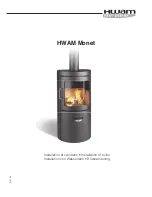
0800 019 5899 [email protected]
10
Important information and warnings!
The incoming water temperature will vary during summer and winter. This may affect the available hot water flow rate. If the water
appears to be luke warm, simply reduce the flow rate out of the outlet until the water reaches the desired temperature.
Water conductivity may be less than 1.25 k
Ω
-cm. Reduce the flow rate to achieve comfortable water temperature. Water conductivity
greater than 12.5 k
Ω
+ 15% will generate an error. In this circumstance, the appliance will shut down safely without damage.
Flow rates
Temperature increase
required (°C)
TSMEB-5
TSMEB-6
TSMEB-7
TSMEB-8
TSMEB-10
Install type
Single
Tandem
Single
Tandem
Single
Tandem
Single
Tandem
Single
Tandem
Max flow rate (Litres
per minute) based on
temperature increase
15°C
4.6
9.2
5.7
11.4
6.9
13.8
8
16
9.2
17
25°C
2.8
5.6
3.4
6.8
4.1
8.2
4.8
9.6
5.5
11
35°C
2
4
2.5
5
2.9
5.8
3.4
6.8
3.9
7.8
45°C
1.5
3
1.9
3.8
2.3
4.6
2.7
5.4
3.1
6.2
Flow rates and energy use with input water at 5°C
Warm water flow rate (Litres per min.)
1.5
2.0
2.5
3.0
3.5
4.0
4.5
5.0
Deliverable output water temperature (°C)
50.0
50.0
50.0
50.0
42.0
39.5
35.5
32.5
Optimised energy usage (kW)
4.7
6.3
7.8
9.4
9.5
9.6
9.6
9.6
Flow rates and energy use with input water at 10°C
Warm water flow rate (Litres per min.)
1.5
2.0
2.5
3.0
4.0
4.35
4.5
5.0
Deliverable output water temperature (°C)
50.0
50.0
50.0
50.0
45.0
42.0
40.5
37.5
Optimised energy usage (kW)
4.2
5.6
7.0
8.4
9.6
9.6
9.6
9.6
Optimised energy usage
Flow rates
The table below shows the flow rate in litres per minute (LPM), related to deliverable output water temperature (°C)
and optimised electrical energy usage (kW). The table shows you the results that can be achieved by varying the water
flow and temperature.
The optimum operational capability of the unit is shown in
GREEN
.










































